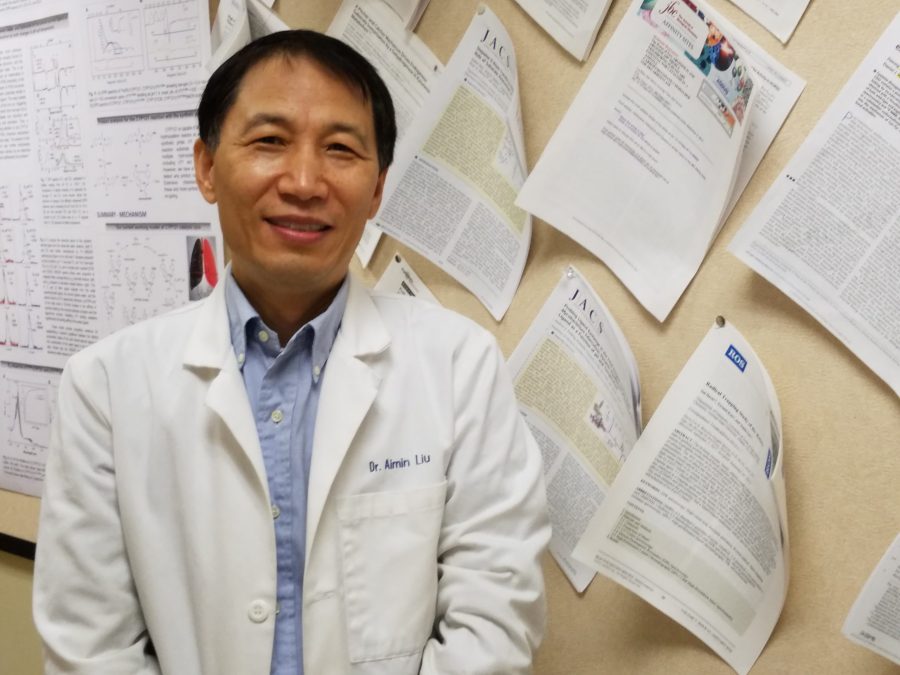Researchers make discovery that will benefit pharmaceutical companies
UTSA Researchers, led by Dr. Aimin Liu, professor and luther brown distinguished chair in biochemistry, made a discovery regarding fluorine, a reactive – and often toxic – chemical element found in water and air, also used in toothpaste and medicine.
Not much is known about fluorine, aside from its toxicity. An example of this is seen in Parchment, Michigan, where water test results revealed the water to be tainted with perfluorooctanesulfonic, a man-made pollutant. As a result, the residents used and drank and used bottled water while the water supply was being decontaminated.
Since fluorine is capable of forming strong bonds, the element can be beneficial to humans if it’s bonded with another element. This is the reason Liu used fluorine in his research.
“We added fluorine to tyrosine [amino acid],” Liu said. “The purpose for that is fluorine is a very small atom and is chemically very electronegative, so it attracts electrons. This completely changes tyrosine’s reactivity.”
Liu’s research team’s goal for bonding fluorine to tyrosine was to use fluorine’s strong bonding properties to slow the tyrosine enzyme’s auto-catalytic process — it was a way to study how enzymes regulate the body’s thiol levels.
“Once you eat, you get a lot of thiol and it needs to be controlled. Therefore, the enzyme starts to make itself much more efficient and each protein only mixes once. It’s technically very challenging to discover how this forms,” Dr. Liu said.

David Crawford/The Paisano
Due to the protein’s single-use condition, and the fact that the enzymes form at irregular times, not much is known about the enzyme’s auto-catalytic process. Thus, Liu hoped that having a carbon-fluorine bond (C-F bond) on the tyrosine amino acid would make it more difficult for the protein’s formation, so he could observe the process.
Then, Liu discovered something about fluorine other than how enzymes regulate thiol. “During this process, the fluorine we added was lost. The C-F bond was cut. This is totally unexpected, because we were [taught] that the C-F bond is supposed to be one of the strongest, most durable bonds in organic chemistry,” Liu said.
Research team makes fluorine discovery
According to Liu, this discovery should draw the attention of pharmaceutical companies since more than 20 percent of drugs attach fluorine to modified enzymes, changing the reactivity and becoming called a suicide inhibitor.
Now, Liu has discovered that it’s still possible to cleave the bond, regardless of its strength, by metal-containing proteins. That’s not to say that the drugs are unstable, because using fluorine involves attaching the element to another compound chemically, which stabilizes the fluorine.
Going forward, Liu stated that pharmaceutical companies should avoid adding fluorine directly to aromatic compounds, which are ring-shaped compounds with double bonds. Bonds are easier to cut while in an aromatic system compared to a non-aromatic system, so the new fluorine discovery is significant enough to raise caution.
The discovery can also help to combat certain pollutants. “We create fluoride compounds around and inside us all the time,” Liu said. “So sooner or later we need more and more tools and strategies to deal with fluorinated compounds because they become – at high levels – toxic.”








